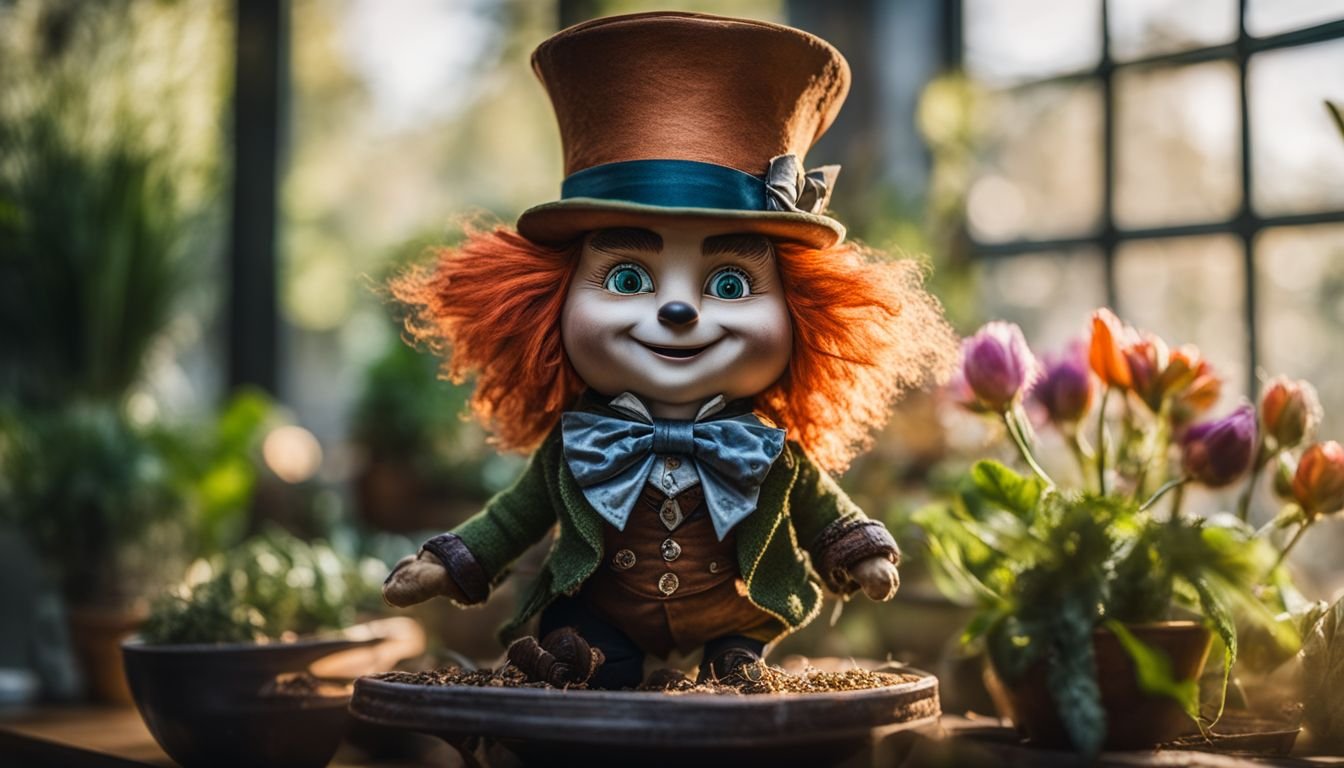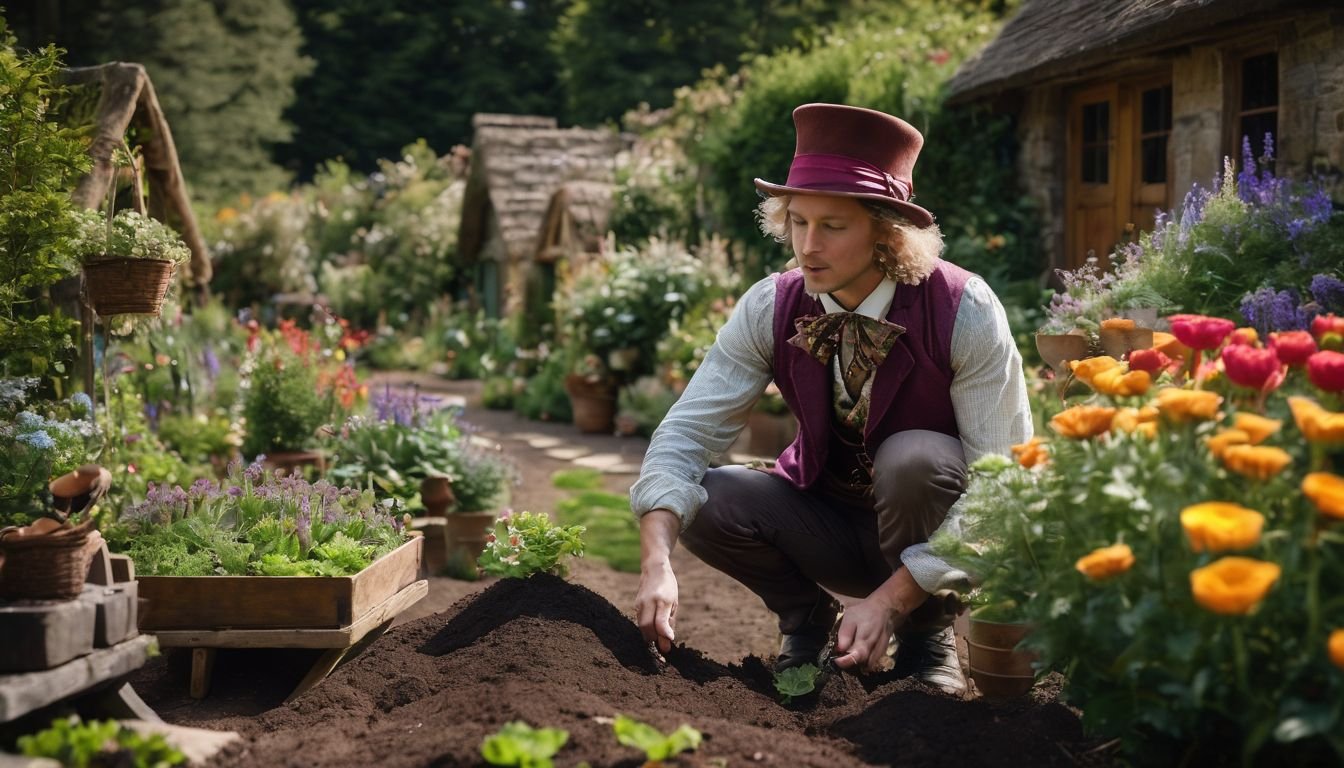Gardening in Australia is a fair dinkum challenge, especially when we’re on the hunt for plants that not only love a good dose of sunshine but also brighten up our gardens with a touch of magic.
Many of us have been charmed by the whimsical Mad Hatter plants, with their snug shrub form and eye-catching flowers, yet find ourselves scratching our heads over how to keep them as lively and colourful as they are at the nursery.
Just like you, we’ve run into this snag.
Driven by shared frustrations, we took it upon ourselves to dive deep into research. What we unearthed was a game-changer: the Cuphea ‘Mad Hatter White’ and Cuphea mexicana compacta ‘Mad Hatter Mauve’ varieties thrive best when matched with just the right pot size – which can range anywhere from cosy 95mm square punnets all the way up to whopping 75lt bags.
Equipped with this nugget of wisdom, we put together this guide to dispel any confusion around selecting the ideal container size for these enchanting plants.
This article is chock-a-block with practical advice tailored for Aussie gardeners eager to inject some cottage charm into their outdoor spaces with Mad Hatter plants. From pinpointing the perfect pot size to nipping common troubles in the bud, rest assured, you’re in good hands.
Ready? Let’s crack on!
Key Takeaways
- Mad Hatter plants, like Cuphea ‘Mad Hatter White’ and Cuphea mexicana compacta ‘Mad Hatter Mauve’, need the right pot size to thrive, starting from 100mm for young plants up to a 500mm pot as they mature.
- These plants love sunlight, requiring at least six hours of direct exposure daily. Proper watering is crucial; the soil should be moist but not waterlogged, with pots needing good drainage to avoid root rot.
- Feeding Mad Hatter plants with balanced fertiliser every four to six weeks during their growing season supports vibrant growth and flowering. Don’t forget to prune regularly for more blooms and tidy growth.
- Trouble signs include wilting leaves (underwatering), yellowing leaves (overwatering), slow growth (not enough light), faded flowers (needs feeding), pest problems, and frost damage can all impact their health.
- Protect Mad Hatter plants from frost by moving them indoors or covering them in colder areas. They play an essential role in attracting pollinators which boost local ecosystems.
Key Characteristics of Mad Hatter Plants

Mad Hatter Plants, featuring varieties like Cuphea ‘Mad Hatter White’ and Cuphea mexicana compacta Mad Hatter Mauve, stand out in any Australian garden with their unique charm.
These sun-loving shrubs showcase bright green foliage and vibrant mauve flowers, making them a stunning addition to your outdoor space.
Cuphea ‘Mad Hatter White’
We’re excited to introduce Cuphea ‘Mad Hatter White’, a standout sun-loving compact shrub perfect for Australian gardens. This plant boasts bright green foliage and matures at an ideal size of 30x30cm, making it a brilliant choice for those seeking a low-growing border or wanting to add a touch of elegance with its white flowers.
Our guide lays out the necessary pot sizes ranging from 100mm to 500mm, ensuring plenty of options for gardeners looking to make this elfin plant part of their outdoor spaces.
Choosing the right pot or punnet is crucial for the healthy growth of your Cuphea ‘Mad Hatter White’. We offer detailed dimensions in our article, allowing you to select precisely what fits your garden’s needs.
From small punnets perfect for starting your plants off to larger bags designed for more mature shrubs, we’ve got all bases covered. Trust us as we walk you through selecting the best home for your new addition, ensuring it thrives and adds beauty to your garden year after year.
This beautiful small compact shrub not only enriches your garden visually but also plays a vital role in attracting pollinators. Planting Cuphea ‘Mad Hatter White’ contributes significantly towards creating an ecosystem that supports local wildlife.
Whether paired with lavenders or eucalyptus, this versatile plant enhances any setting it’s placed in. Let’s give these magical plants the care they deserve and watch as they transform our gardens into vibrant havens.
Cuphea mexicana compacta Mad Hatter Mauve
Moving from the elegant Cuphea ‘Mad Hatter White’, we dive into its vibrant cousin, the Cuphea mexicana compacta Mad Hatter Mauve. This sun-loving variety captivates with its unique flowering display and proves to be a resilient addition to any Australian garden.
With mature growth reaching 30x30cm, it fits perfectly in low growing borders or as an eye-catching standalone feature.
Cultivation of this Mexican false heather requires attention to pot size, ensuring enough space for its roots to flourish. We recommend selecting pots that align with our guide on dimensions – width, depth, and height are crucial for healthy plant development.
Pruning advice is straightforward: trimming back after flowering encourages denser foliage and more blooms in the following season.
Care tips include placing the plant where it will receive full sunlight, thereby maximising flower production. This dazzling ornamental not only adds colour but also benefits from mulching practices which retain soil moisture and temperature – key factors for thriving outdoors in Australia’s varied climates.
Utilise our comprehensive care guidance to ensure your Cuphea mexicana compacta Mad Hatter Mauve reaches its stunning potential without forgetting the ease provided by click & collect services available at leading wholesale nurseries like Plantmark for registered trade customers.
Essential Care Tips for Mad Hatter Plants

Keeping your Mad Hatter plants thriving involves understanding their unique needs. We’ll guide you through selecting the perfect pot size and creating optimal growth conditions for these sun-loving beauties.
Pot Size Guide
Choosing the right pot size for your Mad Hatter plants plays a crucial role in their growth and health. We’ll guide you through the process, ensuring your sun-loving Cuphea thrives in its new home.
- Start with a 100mm pot for young Mad Hatter plants. This size offers enough room for initial root development while keeping the plant cosy and secure. It’s perfect for Cuphea ‘Mad Hatter White’ and Cuphea mexicana compacta Mad Hatter Mauve when they are still finding their footing.
- As the plant begins to mature, upgrading to a 200mm pot supports continued growth. This mid – size option prevents overcrowding of roots, allowing them to spread out and absorb more nutrients and water efficiently.
- For full maturity, aim for a 500mm pot. Mad Hatter plants achieve their mature height and width of approximately 30x30cm in this spacious environment. It gives them ample space to reach their full potential without restriction.
- Consider pot height as well as diameter. A deep pot ensures that the roots have plenty of room to grow downwards, which is vital for stability and accessing moisture deep within the soil.
- Drainage holes are non-negotiable. Even sun-loving plants like the Mad Hatter can suffer from too much water. Ensure your chosen pot allows excess water to escape, preventing issues like root rot.
- Finally, keep an eye on material choices. Pots made from materials like terracotta can help manage soil moisture levels better than plastic options due to their porous nature.
Optimum Growth Conditions
Caring for Mad Hatter plants means we need to provide them with their preferred living conditions. This ensures they thrive, showing off their vibrant colours and unique shapes. Let’s dive into what these sun-loving beauties really need.
- Select the right pot size: Opt for a pot that matches the mature growth size of your Mad Hatter plant. For Cuphea ‘Mad Hatter White’, a pot measuring around 30cm in width is ideal, allowing enough room for its roots to expand without being cramped.
- Ensure adequate sunlight: These plants adore the sun. Place them in a spot where they can bask in at least six hours of direct sunlight daily. This keeps their foliage lush and flowers blooming beautifully.
- Water wisely: While Mad Hatter plants enjoy moist soil, they detest waterlogged roots. Ensure the pot has good drainage and water when the top inch of soil feels dry to the touch.
- Feed them right: Using a balanced fertiliser every four to six weeks during their growing season supports healthy growth. It’s like giving them a nutritious meal that fuels their energy to flower and grow.
- Prune regularly: Snipping off spent flowers and trimming any overgrown branches encourages new growth. This not only keeps your plant looking tidy but also promotes more blooms.
- Protect from frost: Although these plants are tough, frost can be detrimental. If you live in a cooler area, consider moving pots indoors or to a sheltered spot during cold snaps.
Troubleshooting Common Issues with Mad Hatter Plants
We often hear from fellow Australian gardeners who love their sun-loving Mad Hatter plants but face a few challenges along the way. Let’s dive into some common issues and how to solve them, ensuring your Cuphea thrives in our unique climate.
- Wilting or Droopy Leaves: This usually signifies underwatering. Increase your watering schedule, especially during hot, dry periods. Ensure the soil is moist but not waterlogged.
- Yellowing Leaves: Overwatering could be the culprit here. Cut back on watering and check if the pot allows for proper drainage. It’s also wise to ensure your plant isn’t sitting in water.
- Slow Growth: If your ‘Cuphea Mad Hatter White’ or ‘Cuphea mexicana compacta Mad Hatter Mauve’ isn’t reaching its mature growth of 30x30cm, it might not be getting enough sunlight. Relocate it to a sunnier spot where it can bask in direct light for most of the day.
- Faded Blooms: To keep those vibrant flowers coming, regular feeding during the growing season is key. Use a balanced fertiliser every four to six weeks to encourage blooms.
- Pest Problems: Aphids and spider mites can be an issue for Mad Hatter plants kept outdoors or indoors as ornamentals. Neem oil or insecticidal soap sprays work well against these pests without harming aquatic life if you have water gardens nearby.
- Frost Damage: These plants adore sunlight but can struggle in cold temperatures. Protect them from frost by bringing potted plants indoors or covering outdoor ones with frost cloths overnight.
Discover More About Mad Hatter Plants
After addressing how to manage some of the common issues that affect Mad Hatter plants, let’s delve deeper into what makes these plants truly special. Delving into the rich diversity and unique characteristics of Mad Hatter plants offers a fascinating journey for any Australian gardener.
These sun-loving beauties not only bring vibrant colour and life to your garden but also come with an array of interesting features worth exploring further.
Mad Hatter plants thrive in the Aussie climate, requiring specific pot sizes to ensure their roots have enough space to grow and flourish. The growth dimensions, specifically a mature width of 30x30cm, highlight the need for careful selection when choosing pots or punnets from your local Plantmark registered trade customer or if you prefer to shop online.
Moreover, understanding foliage type and recognising signs of insufficient care such as fish kills in nearby waters due to low oxygen levels can greatly enhance your ability to nurture these remarkable plants effectively.
For enthusiasts looking beyond mere care techniques, investigating warranty information on purchases or attending plant list discussions at trade markets opens up new avenues for deepening one’s knowledge about Mad Hatter Plants.
It’s not just about ensuring they receive enough sunlight or are planted in appropriately sized containers; it’s also about embracing their role within broader ecosystems – whether that be attracting pollinators like bees with lavandula and citrus trees or contributing towards balanced aquarium environments alongside aquatic plants like mint.
Exploring these aspects provides a more holistic view on caring for Mad Hatter Plants in Australian gardens.
Conclusion
Caring for Mad Hatter plants truly brings joy to Australian gardeners. We’ve shared insights on pot sizes and essential care tips. Understanding these details ensures your sun-loving plants flourish.
Let’s embrace the journey of growing Mad Hatter plants, exploring their unique beauty and contributions to our gardens. Remember, success lies in the choice of container and providing optimum growth conditions.
FAQs
1. What kind of environment do Mad Hatter plants thrive in?
Mad Hatter plants love the sun and flourish best when they’re placed in sunny spots. They are perfect for Australian gardens known for their bright, sunny days.
2. How big do Mad Hatter plants grow?
These unique plants can reach a mature growth size of about 30cm by 30cm, making them an ideal choice for both garden beds and as striking indoor plants.
3. Can Mad Hatter plants produce fruit like olives?
Yes, surprisingly, Mad Hatter plants can produce fruit that resembles olives! This feature adds an exciting element to growing them, offering both aesthetic beauty and a reward for your gardening efforts.
4. Are Mad Hatter Plants suitable near water bodies like lakes?
While they adore sunlight, placing Mad Hatter plants near lakes or water bodies requires careful consideration due to potential humidity issues. However, with proper care and optimal positioning, they can indeed add a vibrant touch to lakeside gardens.
